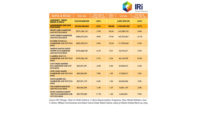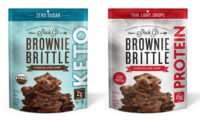Choosing the right fiber ingredients for maximum product appeal

In today’s food marketplace, bakers and snack manufacturers are navigating through the ever-evolving consumer awareness of better-for-you options. Digestive health. Less sugar. Fewer calories. Cleaner labels. The list goes on and on. So how can we meet these demands for health and wellness without sacrificing the great taste and texture consumers expect? While many ingredients can help achieve specific claims and functionality, there’s an unsung hero in the food science toolkit that can help achieve most, if not all of them: fiber. Not only do fibers help manufacturers market better-for-you products, they can also help solve significant formulation challenges. But not all fibers are created equal, so manufacturers can use “The Five Cs” to determine the best fiber option for their formulation.
Consumer appeal
While consumers are interested in health and wellness, taste continues to be top-ofmind for consumers. According to the 2015 “Food and Health Survey” from the International Food Information Council, 83 percent of U.S. consumers say taste is their top purchase driver. Other sensory attributes like color and texture can also make or break consumers’ eating experience. Fibers with a clean taste, neutral color and nongritty texture can increase overall consumer acceptance of finished products.
Comfort
Manufacturers are challenged to deliver the enhanced nutrition benefits of fiber that consumers demand, but some fibers, particularly at high inclusion levels, can cause digestive discomfort. So it’s important to use fiber ingredients at levels that prevent digestive distress.
Clean labels
The 2015 Ipsos “Sweetener Perception Study” indicates that 84 percent of consumers always or sometimes read ingredient statements. In addition, there is a growing demand for products with simple ingredient lists that consumers recognize. Depending on your target audience, selecting a fiber that offers consumer-friendly labeling may provide additional appeal.
Claims
The inherent nutritional and functional benefits of fiber can make a variety of claims possible. From “maintains healthy blood cholesterol” with oat beta glucan to “sugar-free” with polydextrose, choosing the right fiber can provide this extra advantage on the grocery shelf.
Cost-in-use
Fibers differ in stability level, which may impact cost-in-use. When formulating using fibers with poor stability, manufacturers have to overcompensate for fiber lost due to high heat and shear during processing, acid in low-pH systems and long shelf life. Choosing a fiber with superior stability may result in manufacturing efficiencies.
Looking for a reprint of this article?
From high-res PDFs to custom plaques, order your copy today!





